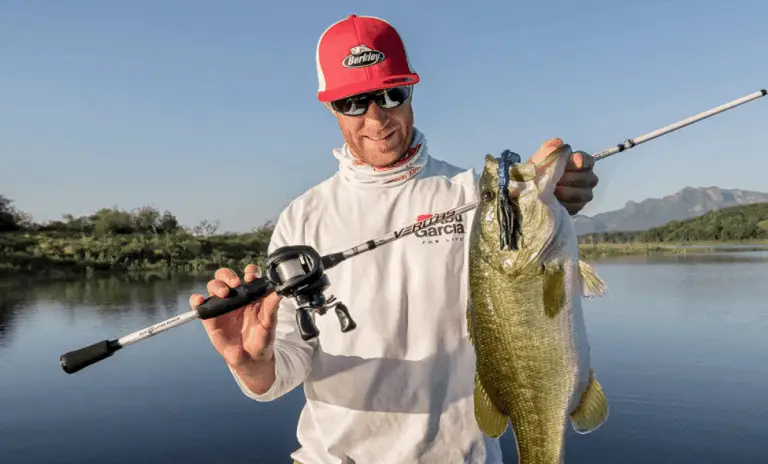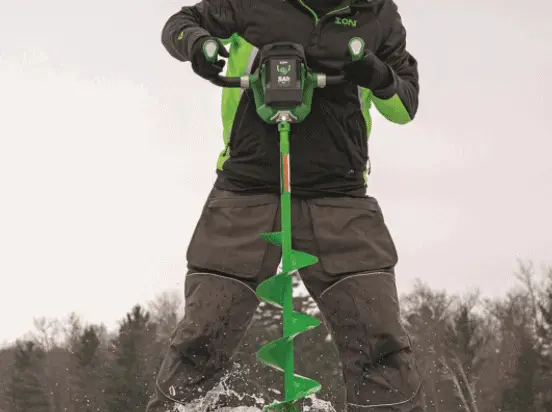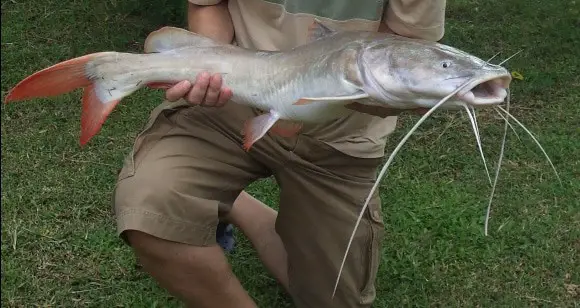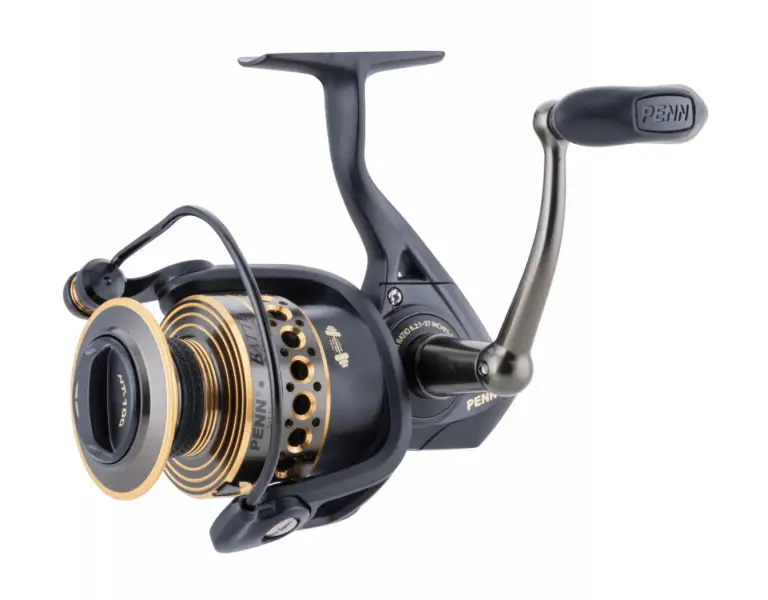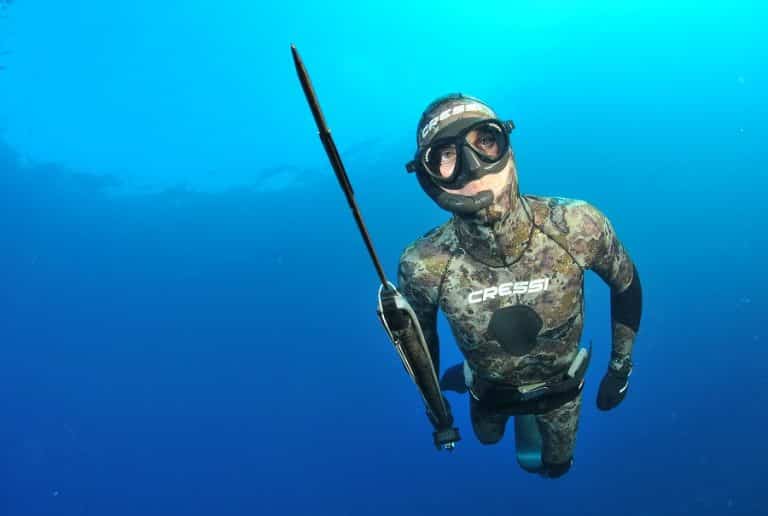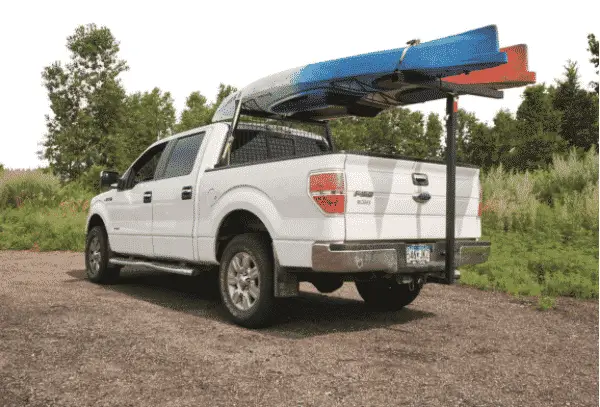8 Best Freediving Fins [Product Reviews & Buyers Guide]
Freediving is, for someone who hasn’t tried it before, terrifying and exhilarating at the same time.
If you SCUBA dive, or even snorkel, you’ve got a lot of cumbersome equipment to get used to. This can be annoying, and there’s the risk that it might fail or be used incorrectly, to the detriment of the diver.
Freediving doesn’t worry about that, because you use almost nothing. You simply get a mask, a wetsuit, the best freediving fins, jump in the water, and hold your breath.
One of the main pieces of equipment you do need, though, is a decent pair of fins.
If you’ve used them before when you’re snorkeling or SCUBA diving you’ll have a rough idea of how these work, but if not they basically propel you much further than you would usually go, with no extra effort.
Best Freediving Fins at a Glance:
- Our top pick: Cressi Gara 3000 LD Long Freediving Fins
- Next Best: MAKO Hunter Freediving Fins
- Best Value: Cressi Gara Professional LD Freediving Fins
- Professional freediving fins: BEUCHAT Mundial Carbon Limited Edition Freediving Fins
8 Best Freediving Fins – Product Reviews
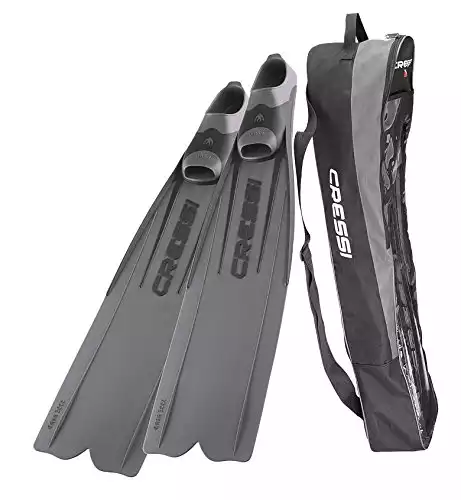 1. Cressi Gara 3000 LD Long Freediving Fins (with Bag)
1. Cressi Gara 3000 LD Long Freediving Fins (with Bag)
Our first fins are from Cressi, who is probably the most renowned brand in the freediving world.
They’re a soft blade, which means two things: firstly, they can be used in cold water (which can make some fins harden up). These fins have also been designed to be as durable as possible, so you can get a lot of use out of them and they won’t get scratched or damaged easily.
They come with a bag, too, just to keep them together and provide that extra layer of protection when you’re out of the water.
Key Features:
- These fins are designed to be powerful and propel the user further with their long and flexible blade. This should reduce leg fatigue and reduce oxygen consumption so you can stay under the water for longer.
- The foot pocket is designed to fit closely to your feet and means that you won’t need to wear any additional footwear. It’s made of soft elastomer, so it’s comfortable and won’t slip off easily.
- They’re also designed to be used for longer dives, and give you even more power, but you should be careful and make sure that you don’t dive too deeply.
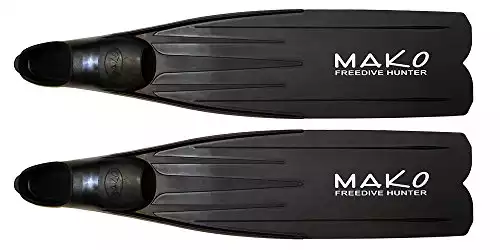 2. MAKO Freedive Hunter Freediving Fins
2. MAKO Freedive Hunter Freediving Fins
The next fins on our list are produced by a freediving brand called Mako. These fins straightforward and easy to use, and you won’t need to worry about any specialist terminology or particular skills that these are adapted to: they’re great for beginners and will be able to do everything you need.
However, this doesn’t mean that they’re not high quality, and even as you improve as a freediver you’ll still be able to get a lot of use out of this model. They are very stiff, so you will need to get used to them and they may feel odd at the start - but swimming with fins is always odd when you do it for the first time, so don’t allow this to put you off.
Key Features:
- Your feet will fit easily into the foot pockets without any kind of other footwear needed. They’re soft enough to be comfortable, but firm where necessary so you still get the full propulsion.
- These are made of polypropylene, which is a type of plastic and is recommended for beginner freedivers. It’s supposed to keep you stable whilst still giving you the best thrust and best propulsion for your movements.
- The blades are included with the fins and they’re non-removable, so you’ll have everything you need for your feet in one.
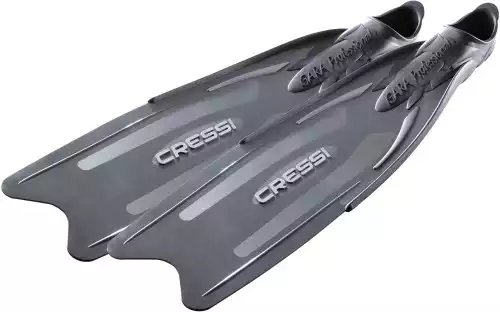 3. Cressi Gara Professional LD Freediving Fins
3. Cressi Gara Professional LD Freediving Fins
The Gara Professional LDs are, like the Cressi Men's Gara 3000 LDs, perfect for any skill level and designed to be used over long distances. They’re also both suitable for different types of diving and are not limited to use with freedivers, although that is their primary function.
If you’re not used to swimming with fins, these will be perfect to help you get used to them and are designed to be forgiving if you make a mistake, but can still be precise and powerful when you get used to them. This product has fins available for people of all sizes, but as these are softer they’ll be better for taller, less muscular bodies.
Key Features:
- You can remove the blades, which means that they can be replaced if they get badly damaged and you won’t need to buy everything again. It’s also easy to change or remove the blades, which will help you pack everything up into a smaller, easier to carry bag if required.
- These are made from an elastomer polypropylene, which is a good material for starter fins and will give you a lot of power. The foot pocket is made from a comfortable elastomer so it fits nicely and doesn’t rub on your feet or ankles. There’s a thermo-rubber sole to help you grip better.
- The blade is reinforced from the foot pocket and along the edge, which makes it a lot stronger and uses all of the power from your kick.
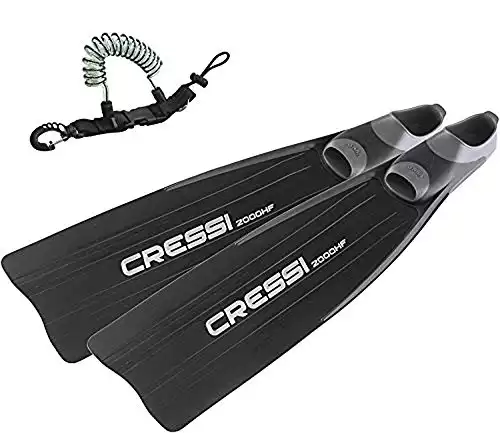 4. Cressi Gara 2000 Reactive Long Fins
4. Cressi Gara 2000 Reactive Long Fins
The Cressi Free Diving Reactive Long Fins are designed to be used by expert freedivers but are also suitable for beginners and intermediates. They’re made from a combination of materials, which allows them to be powerful and comfortable.
You can also use these fins for SCUBA diving, and they are designed for longer, deeper dives, which is part of what makes them great for more experienced freedivers. There’s also the option to wear these with or without neoprene socks, which freedivers often have strong opinions on. Remember to adjust the size you chose based on your whether you’ll be wearing the socks.
Key Features:
- These are made with a special polypropylene to help keep them light and reactive, so this feels like a more natural movement and less alien.
- The foot pockets are designed to make sure that none of the energy from your legs is lost, and work as efficiently as possible, thus saving oxygen and allowing you to dive for longer.
- The lines and reinforcement along the blade allow you to move quickly, which is great if you’re freediving to swim with fish and want to be able to keep up with them with minimal effort and disturbance.
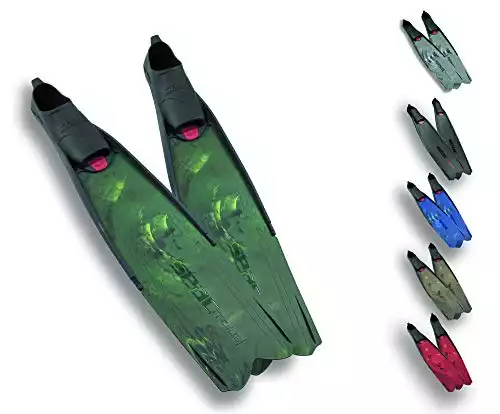 5. Seac Motus Italian Design Long Freediving Fins
5. Seac Motus Italian Design Long Freediving Fins
These are particularly slim, and they’re made specifically for spearfishing and freediving. Fins are shaped differently when they’re multipurpose, and this means that they’re not optimized for freediving and won’t be as effective.
That’s not to say that they’re bad, but the SEAC Motus will work better. The blades are longer than some other models, which means your thrust and propulsion are fully utilized and no energy is wasted.
You can also change the blades, which is good for multiple reasons. Firstly, there is the option to leave everything as it is, and have a fully working pair of fins. Secondly, if the blades get damaged you can get a new pair without having to get a whole new set of fins, and thirdly you can adjust and change the blades so you can find what you like the most and what’s best for you.
Key Features:
- The foot pocket is made of hard thermoplastic rubber, which should keep your feet slightly warmer and be nicer if you’re freediving in cold water.
- The blade is made from technopolymer, which is designed to be extra flexible and reactive.
- You can get these in different colors, which can help you blend into the water and surroundings if you go diving or spearfishing in a particular area.
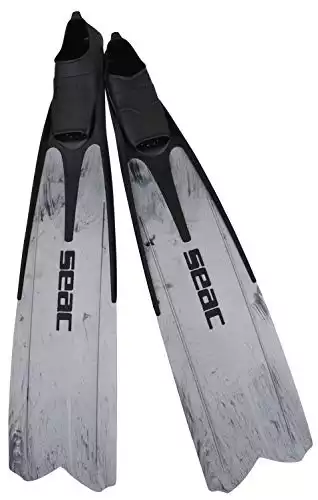 6. Seac Shout Camo S700, Long Fins for Freediving
6. Seac Shout Camo S700, Long Fins for Freediving
This model has the colors we liked earlier, but they’re actually designed to be camouflage so you can get into wildlife, swim around reefs, and fish and not scare them.
One of the amazing things about freediving is that you don’t disturb the animals with noisy equipment, and these fins remove colors that might scare them.
They’re also comfortable, powerful, and versatile, and you can use them SCUBA diving if you’re trying out different things or want to spend longer under the water. These have been designed for use with neoprene boots, which some freedivers prefer to use anyway.
Key Features:
- The SEAC Shout Camo is designed to keep you moving for a long time after you kick, so if infrequent but strong movements are your style these will work well for you.
- You won’t need to worry about these being too flimsy: they’re extremely sturdy, and although it’s important to take good care of them, you should be able to make them last a long time.
- The foot pocket is designed to be as comfortable as possible, and is made from thermoplastic rubber, and is compatible with neoprene boots.
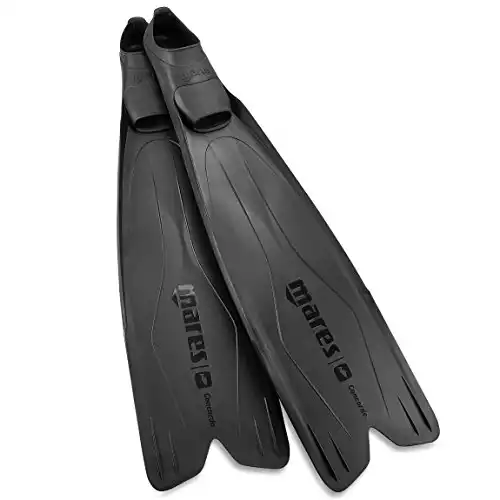 7. Mares Instinct Pro Polytec Fins
7. Mares Instinct Pro Polytec Fins
Want something that’s going to fit onto you like an extra limb? This might be perfect for you. The Mares Instinct is designed to fit onto your feet with no issues of wobbling or misdirected energy. The result is a direct, efficient fin that allows you to move precisely and in a natural way which enhances your freediving experience.
They’re also layered and shaped to work with the water, and the design is based on the real fins of aquatic creatures, which makes them a great option for anyone looking to dive in shallow or mid-depth water.
Key Features:
- The fishtail tip has been carefully made to be as efficient as possible, so you can move easily and without using too much energy. This helps your body conserve oxygen and allows you to stay under the water for longer.
- The foot pocket is shaped to work with or without Neoprene socks, and shouldn’t wobble or turn to the side as you swim.
- If you’re freediving, you probably won’t be able to go into particularly deepwater because you won’t be able to hold your breath for that long. These are designed to work well at the depths that freedivers go to, and should work well with the pressure and currents you’re likely to be exposed to.
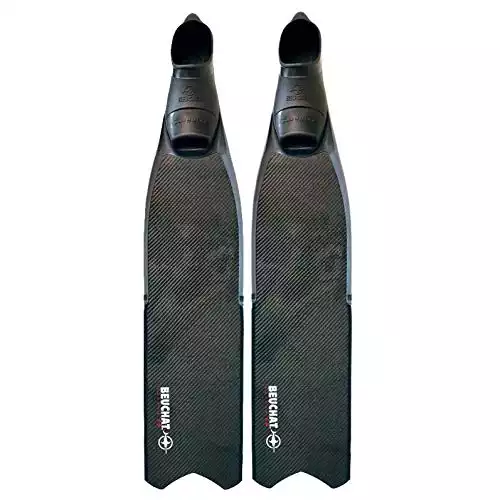 8. BEUCHAT Mundial Carbon Limited Edition Freediving Fins
8. BEUCHAT Mundial Carbon Limited Edition Freediving Fins
There are a few things that set these fins aside from the others. Firstly, they’re a lot more expensive. They’re also made of carbon, which is usually recommended for experts. Carbon doesn’t slowly bend over time like most plastic fins do, and they’re the most efficient: out of all our options, this will give you the most power for each kick.
They’re also much more fragile, so you’ll need to be careful getting in and out of the water with these on. If you do try these you will have probably used plastic fins in the past, and you’ll notice that these are lighter and more responsive - which is why it’s best to only buy these if you’ve got a lot of freediving experience.
key Features:
- To be used with a Mudial foot pocket to get the best possible results
- Tabs on the heels to help you take them off more easily
- The blade tips are shaped like the fins found on animals and are extremely efficient and good at helping to propel you through the water
How to choose the best freediving fins – Buyers Guide
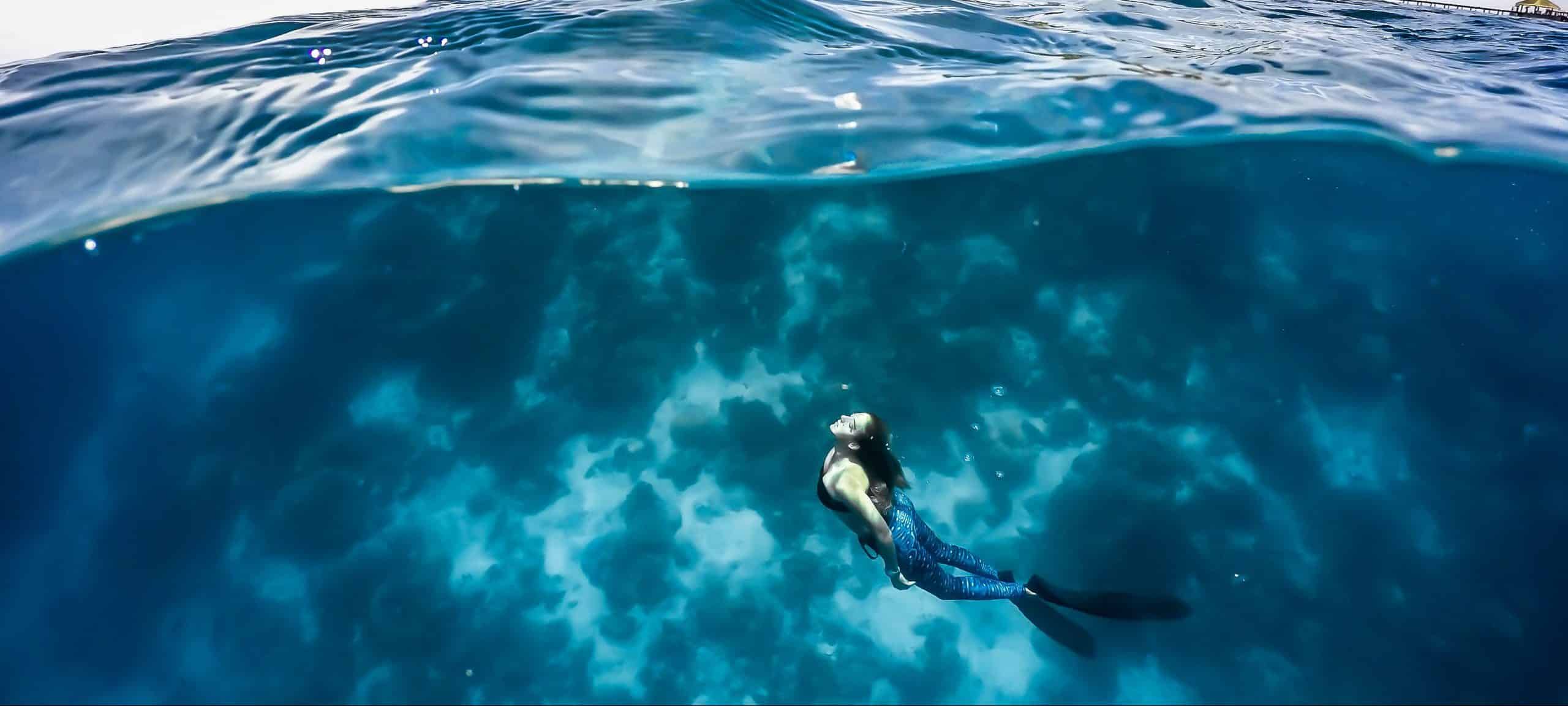
Skill Level
Similar to most sports, you’ll need to find fins that are the best for your skill level. Whilst you might be able to borrow a pair when you first dive, it’s a good idea to find a pair of fins that fits you, works well with your body, and is appropriate for your skill level.
Remember, this is your personal skill level, not that of your dive buddy, and you’ll need to make sure that you’re cautious of overestimating your abilities because this can lead to accidents.
Freediving is amazing, and a lot of fun, but you need to be careful because it can become dangerous, easily.
You should be upfront with diving instructors and dive buddies and let them know how much experience you have, and if there are any issues that they should be aware of.
The advice is for beginners to use polymer plastic fins. They’ll be best for your skill level, and they’re usually more affordable, which means you won’t end up spending a lot of money on a sport that you might not enjoy for a long time.
When you’re more experienced and dive at an intermediate or advanced level, you could look at getting a pair of carbon fiber or fiberglass fins.
You can always see if a friend who free dives would be willing to let you borrow a more expensive pair before committing to buying some yourself.
Material
There are three different materials that are used to make fins. Each has its own advantages and disadvantages, and you should check before you buy.
Polymer, or plastic, is the most commonly used material. Most of the fins on our list are made from some kind of polymer. It’s great for beginners because it’s usually more affordable, and you don’t need to worry about it getting scratched or damaged.
However, they can bend over time which will affect the way they work, and they won’t be as efficient. You should make sure you store them correctly to reduce this.
If you’re only planning on freediving occasionally, polymer fins are probably the right choice for you.
Fiberglass fins do not bend over time, which makes them a good choice for your second pair of fins after you’ve used a polymer pair until they’ve bent.
They’re best for intermediates, so you will need some experience before getting them and they are more expensive, so be ready for that commitment.
Like polymer fins, they’re quite durable and shouldn’t scratch too easily.
Finally, there are carbon fiber fins. They’re the most efficient and will give you the best level of propulsion compared to the amount of effort you put into your swimming.
However, they’re the most expensive choice and although they should last for a long time, it’s only really worth getting them if you’re an expert and you’re freediving regularly.
Budget
The amount you spend on freediving really depends on what you like. Some freedivers wear wetsuits, masks, fins (or monofins) and other equipment – others use much less.
We like diving with fins and think they’re great, but they can be expensive so it’s important to work out what your budget is.
You may be able to find some second-hand fins, or even borrow some before you make that commitment.
As a rule, polymer or plastic fins are the cheapest, and usually cost between $60-$100. Fiberglass fins are the ‘middle’ option, and carbon fiber fins are the most expensive, and the pair included on this list costs nearly $450 for one pair.
Foot Pockets & Blades
Fins are made of two different parts: foot pockets, and blades. As you might expect, your feet go into the foot pockets, and the blades are the bits that extend out and actually propel you.
You can put your feet directly into your foot pockets, or you can use special Neoprene diving socks or booties. This depends on what you like, and the model that you choose.
Some fins are designed to be used with Neoprene diving socks or booties, but others will work best with bare feet.
If you are looking at a pair of fins that can be used with or without socks or booties, make sure you pick the right size so they still fit correctly.
Blades come in various shapes and sizes. They’re usually long and thin, and some have specially shaped ends to look like an animal’s fin.
Some have ridges on to direct or cut the water to give you a more efficient kick. Each of the fins on our list will have a slightly different blade, and you’ll need to work out what sort you like best and what works well for you.
Stiffness
Polymer fins are less stiff than fiberglass and carbon fiber fins. This means they can feel like a more natural part of your leg, and allow for smoother movements.
The stiffness of your fins will really depend on your body type and level of experience: if you’re taller and less muscly, you’ll need soft blades, and if you’re short and more muscular you’ll be better with hard blades.
Medium blades are good for most people, though.
Hard (or stiff) blades are usually made of fiberglass or carbon fiber, and you’ll only get to this when you’re a good freediver with lots of experience.
Other Freediving Equipment You Might Need
Aside from your fins, there are two pieces of equipment you should consider taking when you’re freediving: a wetsuit, and a mask.
You might not like wearing wetsuits, but they’re good at keeping you warm and you can stay in the water for longer if you’re wearing one.
If you’re in a new area, you might want to swim around on the surface for a bit whilst you’re finding the right place to dive, and you don’t want this to be disrupted because you’re getting too cold.
If you’re new to freediving and you’re not ready to commit to buying a wetsuit, you can usually hire them. However, getting your own means that it’ll fit correctly on your body and work much better, which is far more pleasant.
The other thing is a mask. There are lots of reasons people like to free dive, but a big one is to get a closer look at underwater worlds and see aquatic life in its natural habitat.
You can use a snorkeling mask or a SCUBA mask, which will make it easier if you’re borrowing equipment or just trying a lot of things out.
Being able to see clearly underwater is also important for your safety: you should be aware of your surroundings so you don’t swim into the wrong thing, and you’ll need to see what your dive buddy is doing so that you can communicate clearly and return to the surface if something goes wrong.
Freediving Fins FAQs
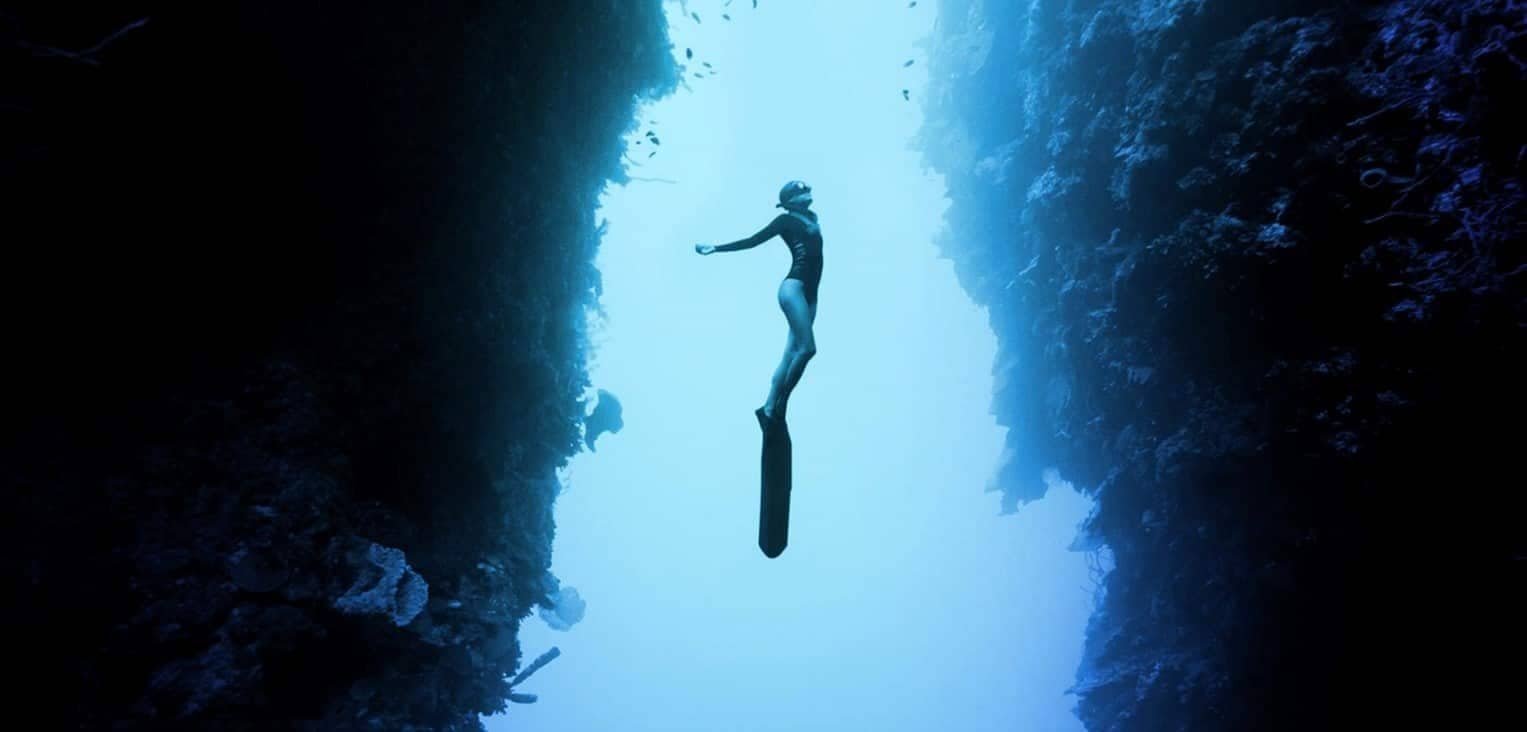
How should a freediving fin fit on your feet?
A freediving fin should fit very snug on your foot. It shouldn’t rub too much (this will be especially painful in saltwater) and if you’re using Neoprene socks or booties they should work together nicely so your feet don’t get squeezed too tightly.
Having said that, it’s often a good idea to get a fin that’s on the smaller side, so it doesn’t slip off too easily as this could be an issue when you’re underwater.
If you have the opportunity, you should try the fins on before you buy them so you can make sure that they’re right for you.
Can you scuba dive with freediving fins?
Yes! You can SCUBA dive with the same fins you use for freediving. A lot of fins (including some on the list) are multipurpose and can be used for SCUBA diving, freediving, spearfishing and snorkeling.
However, you can get fins that are specialized to each of these activities and they tend to work better than the multipurpose fins.
If you’re new to diving and want to try out lots of different activities to see what you enjoy most and what you’d like to pursue, a multipurpose fin is probably a good place to start.
Are short fins better than long fins?
It’s about what’s best for you. Short fins can be better than long fins, depending on who you are and how and where you swim.
Long fins are good if you’re a beginner, and they help propel you much more than short fins do.
The problem is that it’s not as easy to maneuver long fins, so you can’t turn around or change directions as easily.
Also, if you’re diving on a reef or in and around underwater caves, long fins are more likely to get caught or damaged. Most freediving fins are long, and they tend to get longer as your foot size increases.
Best Freediving Fins – Conclusion
Picking the right pair of freediving fins is important. You can use the same ones as you would for snorkeling or SCUBA diving, because of the depths of the water, but you’ll get the best results with specialised freediving fins.
As much as we’d like to just (literally) jump right in, we’re aware that to free dive safely and well, you’ll need to have some equipment.
Used correctly, freediving fins can allow you to move through the water with ease, grace, and efficiency that will allow you to save oxygen and spend more time underwater.
The fins we’ve looked at are aimed at a broad range of freedivers. And most of these would make a great first pair, and you may actually like them so much that you’ll stick with them as you progress and improve as a diver.
There are lots of choices for freedivers, and you should be able to pick a pair that will work well for you, in the water you’re freediving in and cooperate well with the rest of your body.
We hope this guide has taught you about freediving fins, and fins generally. Getting the right pair can take some research, but it’ll be worth it when you actually get to use them.
It’s also important to find the best freediving fins for you personally: consider what will work well with your body, and what will be the most suitable for the weather conditions you’ll be freediving in.
There’s not really a one-size-fits-all attitude to fins: if you’re shorter but muscly, you’ll need harder fins, but if you’re taller and less muscly you should use softer fins.
Short and muscly people have better propulsion, which means that they move forward (or are propelled) more easily. If this isn’t your body type, don’t worry, the fins are there to help with your propulsion and you’ll just need a different design.
You should also factor in your experience, and how much money you’re willing to spend. If you haven’t been freediving before, you’ll need to go with an experienced freediver to make sure that you’re safe as freediving can be dangerous.
If you’re with an instructor they may well have fins that you can borrow to get an idea of how it works and feels, and if you try a few different pairs this will give you a good idea of what you like, and what works well for you.

